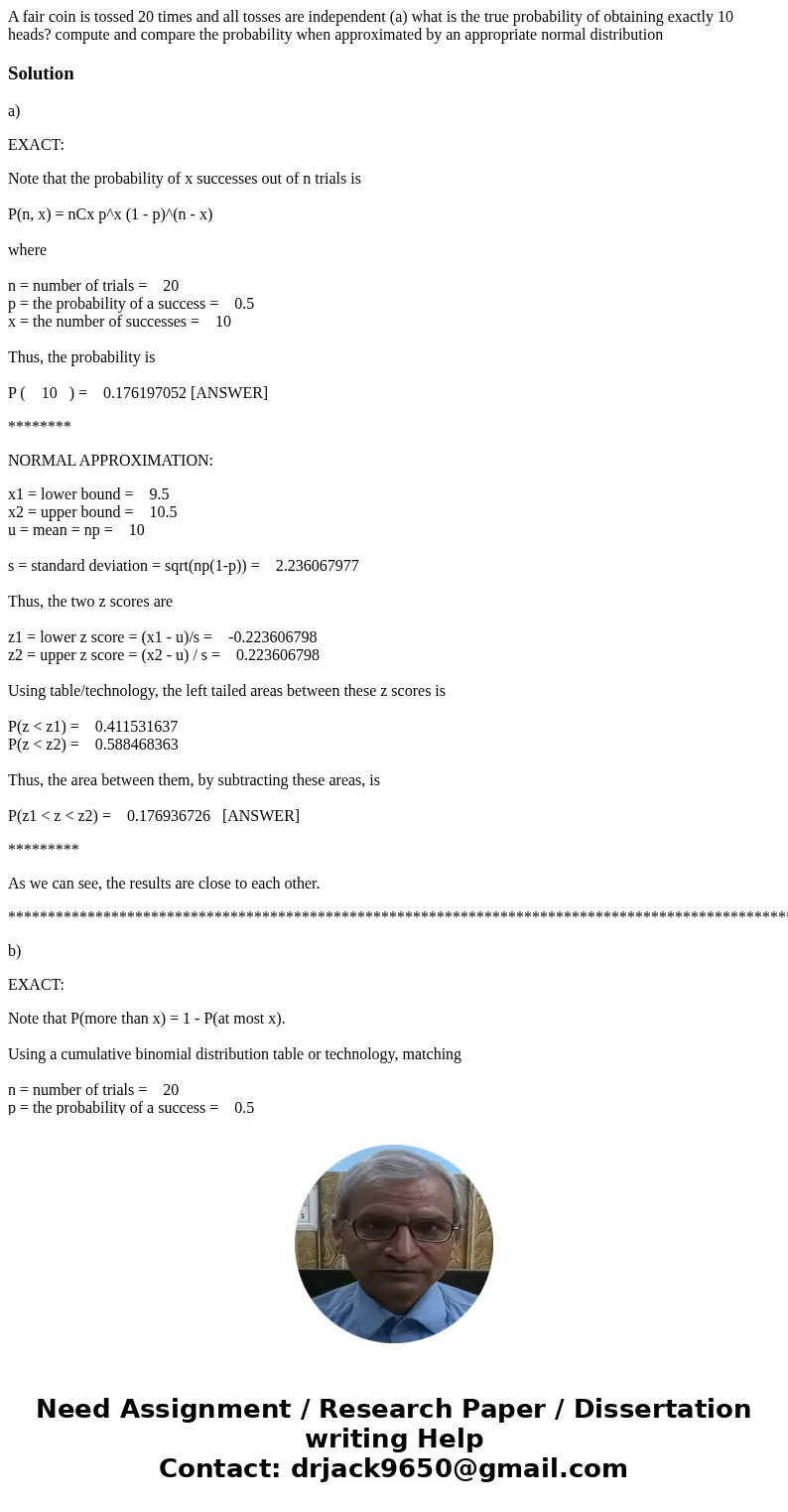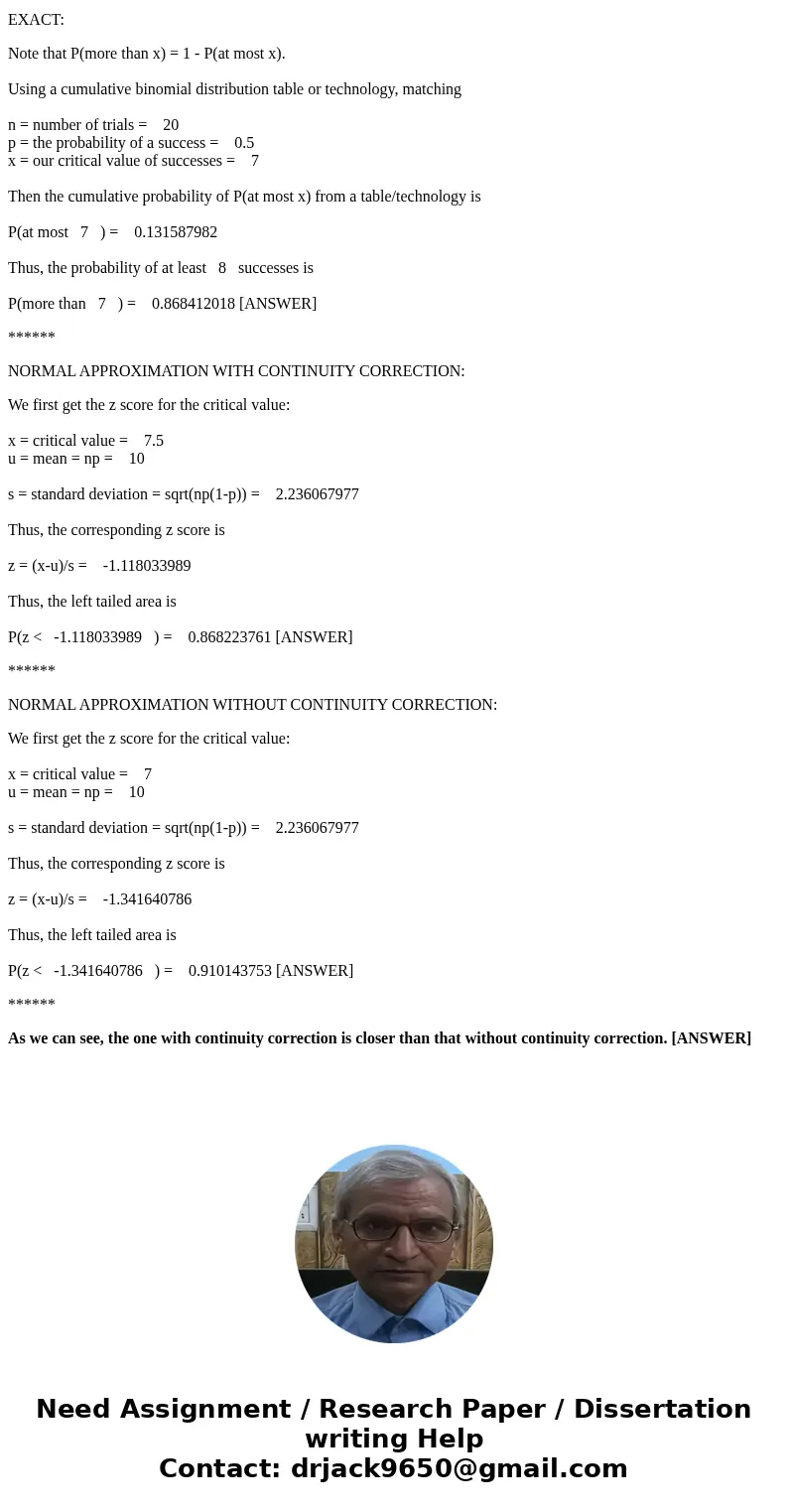A fair coin is tossed 20 times and all tosses are independen
Solution
a)
EXACT:
Note that the probability of x successes out of n trials is
P(n, x) = nCx p^x (1 - p)^(n - x)
where
n = number of trials = 20
p = the probability of a success = 0.5
x = the number of successes = 10
Thus, the probability is
P ( 10 ) = 0.176197052 [ANSWER]
********
NORMAL APPROXIMATION:
x1 = lower bound = 9.5
x2 = upper bound = 10.5
u = mean = np = 10
s = standard deviation = sqrt(np(1-p)) = 2.236067977
Thus, the two z scores are
z1 = lower z score = (x1 - u)/s = -0.223606798
z2 = upper z score = (x2 - u) / s = 0.223606798
Using table/technology, the left tailed areas between these z scores is
P(z < z1) = 0.411531637
P(z < z2) = 0.588468363
Thus, the area between them, by subtracting these areas, is
P(z1 < z < z2) = 0.176936726 [ANSWER]
*********
As we can see, the results are close to each other.
************************************************************************************************************************************************************************************************************************************************************************************************************************************************************************************************
b)
EXACT:
Note that P(more than x) = 1 - P(at most x).
Using a cumulative binomial distribution table or technology, matching
n = number of trials = 20
p = the probability of a success = 0.5
x = our critical value of successes = 7
Then the cumulative probability of P(at most x) from a table/technology is
P(at most 7 ) = 0.131587982
Thus, the probability of at least 8 successes is
P(more than 7 ) = 0.868412018 [ANSWER]
******
NORMAL APPROXIMATION WITH CONTINUITY CORRECTION:
We first get the z score for the critical value:
x = critical value = 7.5
u = mean = np = 10
s = standard deviation = sqrt(np(1-p)) = 2.236067977
Thus, the corresponding z score is
z = (x-u)/s = -1.118033989
Thus, the left tailed area is
P(z < -1.118033989 ) = 0.868223761 [ANSWER]
******
NORMAL APPROXIMATION WITHOUT CONTINUITY CORRECTION:
We first get the z score for the critical value:
x = critical value = 7
u = mean = np = 10
s = standard deviation = sqrt(np(1-p)) = 2.236067977
Thus, the corresponding z score is
z = (x-u)/s = -1.341640786
Thus, the left tailed area is
P(z < -1.341640786 ) = 0.910143753 [ANSWER]
******
As we can see, the one with continuity correction is closer than that without continuity correction. [ANSWER]


 Homework Sourse
Homework Sourse